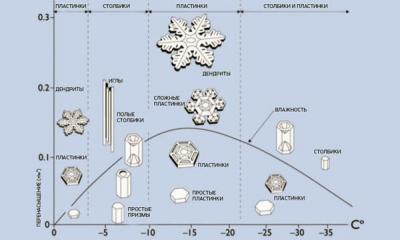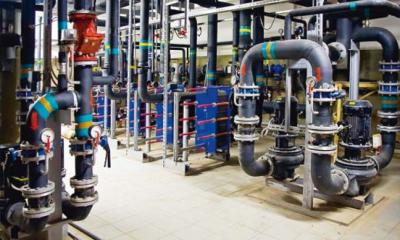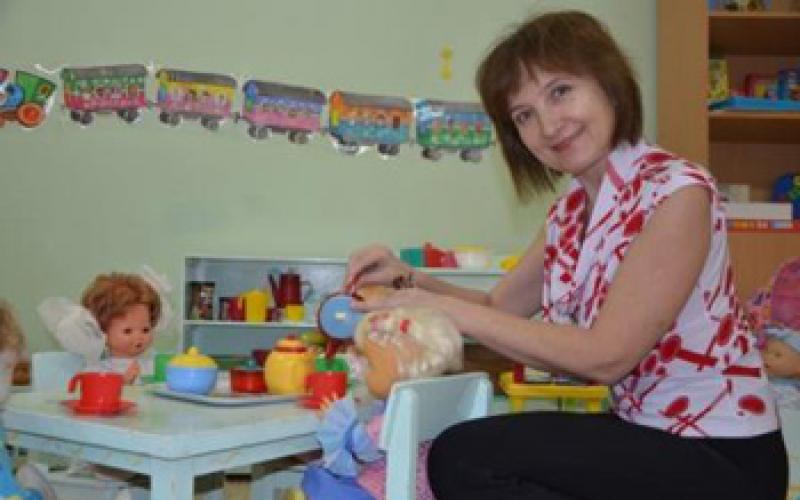A simple machine is a mechanical device that consists of a minimum of moving parts but yet can create an improvement of the output over the input. The improvement could be creating a mechanical advantage or simply changing the direction of the output. Mechanical advantage is the increase of force, distance or speed from the input value.
Around the 16th century, the classic list of simple machines was determined. The list consisted of the lever, wheel and axle, pulley, inclined plane, wedge, and screw.
These simple machines can be broken into three classifications: lever simple machines, rotating simple machines, and inclined plane simple machines.
Questions you may have include:
- What do lever simple machines do?
- What do rotating simple machines do?
- What do inclined plane simple machines do?
This lesson will answer those questions. Useful tool: Units Conversion
Lever simple machines
The lever simply consists of a rod or board that pivots on a fulcrum, creating a mechanical advantage or a change in direction.
The lever is a classic simple machine that achieves a mechanical advantage according to the ratio of the output or load arm of the lever divided by the input or effort arm.
The mechanical advantage of a lever can concern force, distance, or speed of the output.
The efficiency of the lever is very high, since the loss due to friction at the fulcrum is low.
Rotating simple machines
Rotating simple machines include rollers, wheel and axle, crank, and pulley.
Rollers
The wheel or roller by itself can make it easier to move objects by overcoming friction.
Wheel and axle
When an axle is added to a wheel, a torque on the axle increases the speed of the outer surface of the wheel. Likewise, turning the wheel from its outer edge increases the force applied from the axle.
Crank
A crank is like a wheel and axle. You can push on the handle of a crank, and it will create a twisting force or torque on the axle. This is a variation of the wheel and axle.
Pulley
A pulley is a wheel and axle, that uses a rope to lift objects. A major purpose of a pulley is to change the direction of the input force. You can pull down one a pulley rope, and the rope will lift the object upward.

Complex set of pulleys
A complex set up pulleys, such as a block-and-tackle configuration, can result in a mechanical advantage. The question is that if it is a complex set, is it still a simple machine? Probably not.
Inclined plane simple machines
Variations of an inclined plane include a ramp, wedge, and screw.
Ramp
The inclined plane or ramp makes raising a weight to a given height easier, according to the angle of the incline. Unfortunately, the resistive force of friction from sliding the object on the ramp can negate the mechanical advantage.
Variations of the inclined plane are the wedge and screw.
Wedge
Although a wedge is considered a simple machine, it is really a special application of an inclined plane.
Screw
The screw is really an inclined plane that is wrapped around a shaft. Turning the shaft around its central axis transforms rotational motion and torque into axial motion and force.
A screw can also act like a wedge, forcing itself into a softer material.
Summary
Simple machines usually exchange using a smaller force over a greater distance to move a heavy object over a short distance. The work required is the same, but the force required is less. The are also simple machines that help to reduce the resistance of friction or such.
Make it your mission to benefit your community
How Simple Machines Work
What is a simple machine and how do they work? I"m so glad you asked! Machines make work easier by changing the size of force, direction of force, or distance the force acts on.
Lifting a car with a flat tire and loosening the lugnuts can be accomplished by a single person thanks to simple machines. The jack and lug wrench are simple machines that alter the force needed to change the tire.
Six Simple Machines
Simple machines are basic devices used to alter the force needed to accomplish a task. There are six types of simple machines.
- lever
- wheel and axle
- inclined plane
- wedge
- screw
- pulley

The first type of simple machine is the lever. A lever is a rigid bar that rotates on the fixed point of a fulcrum and changes the distance or size of a force.
There are three classes of levers. A first class lever has an input force and output force on either side of the fulcrum. This causes the output to move in the opposite direction of the the input force. An example of a first class lever is a see-saw. A second class lever has an output force between the input force and fulcrum. This changes the distance of the force. A wheelbarrow is a second class lever. The third class lever has the input force between the output and fulcrum. A broom is a third class lever.
Wheel and Axle
The wheel and axle make work easier by changing the distance the force acts on. A wheel and axle consists of two disks or

cylinders with different radiuses. Examples are a steering wheel and shaft, a car wheel and axle, and a screwdriver.
Inclined Plane
An inclined plane is a slanted surface on which a force can move an object to a different elevation. Why do gentler slopes and ramps require less energy to move a load on? Because the input force required to travel the greater distance of a slope is changed to the smaller distance of the output force – the upward motion.

A wedge is a device made of two back to back inclined planes and is used to split objects. When a wedge is driven into a log, the size of the input force at the wider top of the wedge is changed to greater output force at the narrower point forcing the wedge through the wood. Knife blades are an example of a wedge.
A screw is an inclined plane wrapped around a cylinder. Screws with threads closer together require

less force to turn because the length of the inclined plane is longer. Nuts and bolts are screws. A nut is a screw with the threads on the inside.
The last type of simple machine is the pulley. A pulley consists of a rope that fits into a groove in a wheel. A pulley makes work easier by changing the direction or direction and size of the force.
There are three types of pulleys . They are the fixed pulley, moveable pulley and pulley system.

The fixed pulley is a single fixed pulley and rope. This changes the output direction of the force, making it opposite of the input. When you pull down on a fixed pulley a weight is lifted up.
A moveable pulley is fixed to the object being moved instead of a fixed location. Moveable pulleys multiply the input force needed to lift a heavy object thus reducing the force needed to lift heavy objects. Moveable pulleys are used to move ship sails and window washer platforms.
Pulley systems combine fixed and moveable pulleys to create large mechanical advantages. A crane uses pulley systems to lift enormous loads like locomotives.
References
- Michael Wysession, David Frank, Sophia Yancopoulos. Physical Science Concepts in Action. p.417 – 435. New Jersey: Prentice Hall, 2004.
М.В. Рудакова (г.Иркутск)
Методическая разработка занятия по теме «Machines and Work» (Машины и работа)
Аннотация
Данное занятие проводится при изучении темы: «Машины и работа» со студентами III курса (1 семестр) по специальности 110809 «Механизация сельского хозяйства ». Занятие разработано по учебнику Бгашев В.Н., Долматовская Е.Ю. Английский язык для студентов машиностроительных специальностей. Студенты уже прошли базовый этап подготовки по дисциплине, и уже достаточно владеют лексическим и грамматическим материалом для изучения программы английского языка профессиональной направленности. Занятие предназначается для продвинутого этапа подготовки по английскому языку и обеспечивает коммуникативную профессиональную направленность обучения. По данной теме студенты уже изучили основной лексический и грамматический материал, поэтому тип занятия - систематизация и обобщение знаний . Все этапы занятия построены на единых методических принципах, развивают основные виды иноязычной речевой деятельности, формируют межкультурные компетенции будущих специалистов. На занятии используется технология коммуникативного обучения и технология обучения в сотрудничестве, а также технология критического мышления. Для реализации поставленной цели применяются познавательные методы мотивации, волевые методы (самооценка и коррекция, рефлексия поведения), а также метод мозгового штурма. На этапе построения проекта студентам предлагается использовать, как прием, ментальную карту (Mind Map). Особое внимание было уделено изучению лексического аспекта, так как обучающийся должен уметь переводить тексты профессиональной направленности, общаться на профессиональные темы; самостоятельно совершенствовать и пополнять словарный запас.
Все этапы занятия способствуют развитию речевой, языковой и профессиональной компетенции и достижению поставленных воспитательных и образовательных целей. Предметом оценки служат умения и знания, предусмотренные ФГОС по дисциплине Английский язык , направленные на формирование общих и профессиональных компетенций.
Тема занятия: «Machines and Work» (Машины и работа)
Цель занятия: создать условия для развитиякоммуникативной компетенции.
Задачи занятия: образовательная: формировать лексические навыки говорения, развивать умения смыслового чтения (просмотровое, поисковое, изучающее); развивающая: развивать память, внимание, мышление, логическое мышление и языковую догадку, учить анализировать, обобщать, группировать); воспитательная; воспитывать познавательный интерес в изучении иностранного языка, формировать навыки групповой работы.
Формируемые компетенции: ОК 1. Понимать сущность и социальную значимость своей будущей профессии, проявлять к ней устойчивый интерес.
ОК 3. Принимать решения в стандартных и нестандартных ситуациях и нести за них ответственность.
ОК 4. Осуществлять поиск и использование информации, необходимой для эффективного выполнения профессиональных задач, профессионального и личностного развития.
ОК 5. Владеть информационной культурой, анализировать и оценивать информацию с использованием информационно-коммуникационных технологий.
ОК 6. Работать в коллективе и команде, эффективно общаться с коллегами, руководством, потребителями.
Тип занятия: систематизация и обобщение знаний.
Межпредметные связи: русский язык, физика, механика, машины, механизмы.
Оборудование занятия: учебник, проектор, компьютер, экран, презентация, раздаточный материал, листы ватмана, фломастеры, магниты.
Формы работы: индивидуальная, групповая, фронтальная
Этапы занятия. Формы работы
Содержание занятия. Возможные методы и приемы выполнения
Основные виды учебной деятельности
УУД, формирующиеся на данном этапе
Деятельность учителя
Деятельность обучающихся
Этап мотивации учебной деятельности
Организационный момент
(2 мин.)
T. Good morning, students! I`m glad to see you. It is really fine day today, isn’t it? How are you today? What about the weather today? Is it fine? Let`s start our lesson.
Учитель приветствует студентов, проверяет их готовность к занятию.
Студенты включаются в иноязычное общение, реагируя на реплики учителя, согласно коммуникативной задаче.
Личностные: адекватная мотивация учебной деятельности; формирование мотивации к изучению иностранного языка; формирование положительного отношения к занятию иностранного языка.
Регулятивные: самооценка готовности к уроку.
Коммуникативные: слушать и реагировать на реплику адекватно речевой ситуации.
Лексико-фонетическая зарядка
(7 мин.)
Electricity, effort, motion, distance, rate, weight, horsepower, watt, kilowatt, force, work wind, water, steam, petroleum, prime mover, windmill, turbine, generator, steam engine, internal combustion engine, electric motor
Учитель предлагает студентам проговаривать слова для развития произносительных навыков.
Студенты проговаривают слова, которые в дальнейшем они смогут использовать в своей речи, работают над произношением. Соотносят графический и звуковой образ английских слов.
Регулятивные: осуществлять самоконтроль правильности произношения.
Познавательные: извлекать необходимую информацию из прослушанного.
Речевое погружение
(7 мин.)
Т . Thank you! Great! Now, students look at the screen, here you can see the car. Let`s try to name the parts of this car and describe them using the model: This is/these are… . N+ is/are made of…
For example: this is a windscreen. The windscreen is made of glass. ( Приложение 1 )
Учитель организует погружение в иноязычную среду, закрепляет навыки употребления знакомых лексических единиц и грамматической модели.
Студенты, используя ранее изученные лексические единицы, описывают автомобиль, называя части автомобиля и материалы, из которых они сделаны.
Коммуникативные: слушать и осознанно воспринимать речь других студентов, осуществлять корректировку неправильных ответов.
Ознакомление с темой занятия, сообщение целей
(2 мин.)
Т . Students, as you know a machine is a device that transmits and changes force or motion into work. A machine can be very simple or very complex. Terms like work, force, and power are closely connected with machines. I think you`ll try to guess what our lesson will be about. Well, what shall we do today? Yes, you`re right, we`ll speak about machines and work. We must give the definitions of the words - work, force, power and connect them with «work» and «machines». Is the topic interesting for you?
Учитель дает возможность студентам самостоятельно определить тему занятия, цели и что для этого необходимо.
Студенты самостоятельно определяют тему и цели занятия с помощью опорной лексики.
Познавательные: уметь адекватно, осознанно и произвольно строить речевое высказывание в устной речи.
Регулятивные: определять цель учебной деятельности с помощью учителя; планировать свои действия для реализации задач.
II .Этап актуализации опорных знаний
Лексическая работа
(10 мин.)
T. 1) To begin with I propose you to divide the following words into three groups, those which describe: 1)basic terms of physics and mechanics; 2)energy sources; 3)mechanisms, machines. ( Приложение 2)
2) The following verbs are often related with basic terms of physics and mechanics. Now, students try to make up word combinations using these verbs: to produce, to transform, to supply, to result in, to exert, to set, to perform, to result from, to measure…in. Model: to transmit motion/force ( Приложение 2)
Учитель активизирует знакомую лексику, корректирует ответы студентов по необходимости.
Студенты самостоятельно выполняют задания, используя ранее изученные лексические единицы. Свои ответы заносят в таблицу. Проверка и коррекция выполненного задания.
Коммуникативные: осознанное построение речевых высказываний, рефлексия.
Регулятивные: исследование условий учебной задачи, обсуждение способов решения.
Познавательные: аргументация своей точки зрения.
Говорение, предугадывание
(4 мин.)
T. Look at the screen, here you can see the terms. The task is to match each one with its correct definition.
(Приложение 3)
Учитель проверяет правильность выполнения задания.
Студенты подбирают к каждому термину соответствующее ему определение.
Логические:
Познавательные: уметь анализировать информацию.
III . Этап самостоятельной работы с самопроверкой по образцу
Смысловоечтение
(14 мин.)
T. Well done. Let`s continue our lesson. Read the text “Machines and work”, try to focus on its essential facts, and choose the most suitable heading below for each paragraph: 1) Prime movers 2) Definition of “machine” 3) The relationship between «work» and «force» 4) Power and its measures.
You also should find the definitions of basic terms connected with «machines» and «work». Text A is on page 192 .
Учитель информирует обучающихся об алгоритме работы над чтением.
Студенты читают текст с пониманием основного содержания, подбирают заголовки к абзацам и находят определения основным понятиям, связанными с «работой» и «машинами».
Логические: развивать умения сосредоточить внимание, догадку и логику.
Регулятивные: совершенствовать навыки смыслового чтения, используя лексику урока.
Познавательные: развивать смысловое чтение; осуществлять поиск и выделение необходимой информации; уметь структурировать знания.
Самопроверка и самооценка
(5 мин.)
T. Time is running. Let`s check your tasks.
Учитель контролирует, как студенты аргументируют свою точку зрения, корректирует их ответы.
Студенты обсуждают прочитанный текст, дают определения основным понятиям, связанными с «работой» и «машинами».
Регулятивные: уметь правильно оценивать результаты своей работы и одногруппников.
Коммуникативные: уметь слушать друг друга для восприятия необходимых сведений и поддерживания беседы.
Говорение. Работа в группах
(12 мин.)
T. Well, let`s go on. Now, students, we`ll have a group work. I will give you some questions about the text and you should answer them. ( Приложение 4)
Учитель делит студентов на две группы и дает вопросы для обсуждения.
Студенты делятся на две группы и вытягивают вопросы по прочитанному тексту. Обсуждают вопросы и ответы на них. Используют готовые речевые материалы для оформления ответов.
Коммуникативные: участвовать в работе группы, осуществлять взаимоконтроль и взаимопомощь; проявлять активность во взаимодействии для решения общих задач.
Познавательные: уметь сопоставлять и отбирать информацию из текста, осознанно строить речевое высказывание в устной форме.
Личностные: формировать навыки сотрудничества, проявлять инициативу.
IV. Этап построения проекта
Чтение с целью извлечения специальной информации (работа в группах)
(15 мин.)
T. Students, your task is to give a short report about «Machine, Work, Power».
Учитель ставит задачу перед группами приготовить сообщение «Машина, работа, сила» с использованием активного словаря, который был составлен во время лексической работы на этапе актуализации опорных знаний. Учитель предлагает студентам лист ватмана для оформления своего сообщения.
Студенты составляют ментальную карту, используя информацию из текста и таблицу (Приложение 2), распределяют, кто и о чем будет говорить.
Коммуникативные: участие в работе группы: распределение обязанностей, планирование своей части работы, осуществление взаимоконтроля, взаимопомощь; оформление своих мыслей с учетом учебной задачи.
Познавательные: умение анализировать, группировать факты, строить логические рассуждения; умение выделять главные факты, опуская второстепенные.
Личностные: проявлять инициативу и самостоятельность, стремиться к совершенствованию собственной речевой культуры.
Регулятивные: принимать и сохранять учебную задачу, сравнивать результаты соей работы с результатами других.
V . Этап проверки реализации построенного проекта
Проверка проекта
(8 мин.)
T. So, it`s time to begin to represent your projects.
Учитель определяет уровень усвоения необходимых знаний.
Студенты рассказывают об основных понятиях физики и механики, механизмах и источниках энергии и показывают их взаимосвязь с машинами и работой. Свои сообщения сопровождают демонстрацией проекта на листе ватмана (Mind Map).
Познавательные: умение осознанно строить речевое высказывание в устной форме, совершенствовать речевые навыки.
Коммуникативные: формировать собственное мнение и позицию; аргументировать свою точку зрения; участвовать в работе группы.
IV . Этап рефлексии учебной деятельности на занятии
Подведение итогов работы
(1,5 мин.)
T. Now we come to the end of the lesson. Do you remember the topic? What did we study today? What was new for you? Let’s review the new vocabularies in chain.
Учитель задает вопросы. Выставляет оценки за занятие, комментирует, мотивирует на дальнейшую успешную работу.
Студенты отвечают на вопросы учителя и высказывают свое мнение.
Регулятивные: умение контролировать свою деятельность по результатам, умение адекватно понимать оценку учителя, одногруппников.
Личностные: умение оценивать свою деятельность; проявлять стремление к совершенствованию собственной речевой культуры в целом.
Рефлексия
(1,5 мин.)
T. Do you like our lesson? Are you in a good mood at the end of the lesson? Do you like your work today?
Учитель приглашает студентов высказать свое мнение об уроке.
Студенты строят высказывания, выражающие мнение, отвечают на вопросы на учителя. Осваивают формы личностной рефлексии. (Приложение5)
Домашнеезадание
(1 мин.)
T. Your homework is the ex.26, p.203. You should fill the table.
Учитель объясняет, что надо сделать в процессе домашнего задания.
Студенты записывают домашнее задание.
Выводы
Занятие английского языка на III курсе по теме «Machines and Work» (Машины и работа) является занятием систематизации и обобщения знаний по данной теме.
На этапе организационного момента учитель создает общий положительный настрой на предстоящее занятие, помогает обучающимся организовать собственное учебное пространство. На данном занятии реализуются принципы личностно-ориентированного, развивающего обучения, осуществляется самооценка и взаимооценка обучающимися. Деятельность учителя в большей степени представлена в виде организации работы и помощи обучающимся в различных учебных ситуациях.
На основных этапах занятия используется системно-деятельностный и коммуникативный подходы. При подведении итогов и рефлексии предусмотрено обсуждение деятельности студентов на уроке, само- и взаимооценивание результатов работы, посредством чего обучающиеся овладевают навыками анализа, оценки своей работы и других, умением участвовать в диалоге, уважительно высказываться о деятельности других.
В ходе занятия (наряду с учебными) решались и жизненно-практические задачи, использовался жизненный опыт обучающихся с целью развития их познавательной активности, самостоятельности.
Список использованной литературы
Бгашев В.Н., Долматовская Е.Ю. Английский язык для студентов машиностроительных специальностей. М.: Астрель АСТ, 2013. 381 с.
Дубинина В.Г . Personality (Личность)//Английский язык. Все для учителя. 2014. №1. С.14-20.
Интернет-ресурсы - Википедия. свободная энциклопедия.
Чернухина А.Е. Англо-русский технический словарь. М.:ОНИКС, 1997. 1026 с.
Приложение 1
Let`s try to name the parts of this car and describe them using the model: This is/these are… . N+ is/are made of…
For example: this is a windscreen. The windscreen is made of glass
Bonnet – капот
Wing mirror – боковое зеркало
Windscreen – лобовое стекло
Rear-view mirror – зеркало заднего вида
Windscreen wiper – «дворник»
Door – дверь
Boot – багажник
Tyre – шина
Wheel – колесо
Headlight – фара
Bumper – бампер
Licence plate – номерной знак
Indicator – указатель поворота
Приложение 2
1) Divide the following words into three groups, those which describe: 1)basic terms of physics and mechanics; 2)energy sources;
3)mechanisms, machines:
Electricity, effort, motion, distance, rate, weight, horsepower, watt, kilowatt, force, work wind, water, steam,
petroleum, prime mover, windmill, turbine, generator, steam engine, internal combustion engine, electric motor
2) The following verbs are often related with basic terms of physics and mechanics. Try to make up word combinations using these verbs: to produce, to transform, to supply, to result in, to exert, to set, to perform, to result from, to measure…in. Model: to transmit motion/force.
Active vocabulary
application
Nouns and combinations with the nouns
Verb combinations
1. Basic terms of physics and mechanics
electricity
effort
motion
distance
rate
weight
horsepower
watt
kilowatt
force
work
to produce electricity
to exert effort
to set in motion
to result in motion
to hold up the weight
to exert force
to produce work
to perform work
to result from
2. Energy sources
wind
water
steam
petroleum
3. Mechanisms and machines
Prime mover
windmill
turbine
generator
steam engine
internal combustion engine
electric motor
Приложение 3
Match the term with its correct definition:
Machine
the rate at which work is performed.
Prime mover
a device that uses force to accomplish something.
Force
an effort that results in motion or physical change.
Work
a machine whose input is natural source of energy.
Power
a combination of the force and the distance through which it is exerted.
Приложение 4
Questions for the first group:
What is a simple definition of a machine? What is more technical
definition? What does this definition imply?
Describe some very simple machines. Name some complex machines.
What do we call machines whose is a natural source of energy? What natural
sources of energy do you know and what machines use them?
Why aren`t electric motors prime movers?
Questions for the second group:
What is force? Give some examples of force.
What is work? How can work be expressed mathematically?
Give an example.
What is power?
How is the rate of doing work usually given in the English-
Speaking countries? Why was the term invented?
In what terms is power measured in the metric system?
Приложение 5

). The steeper the slope, or incline, the more nearly the required force approaches the actual weight. Expressed mathematically, the force F required to move a block D up an inclined plane without friction is equal to its weight W times the sine of the angle the inclined plane makes with the horizontal (θ). The equation is F = W sin θ.
In this representation of an inclined plane, D represents a block to be moved up the plane, F represents the force required to move the block, and W represents the weight of the block. Expressed mathematically, and assuming the plane to be without friction, F = W sin θ.The principle of the inclined plane is used widely-for example, in ramps and switchback roads, where a small force acting for a distance along a slope can do a large amount of work.
The
A lever is a bar or board that rests on a support called a fulcrum. A downward force exerted on one end of the lever can be transferred and increased in an upward direction at the other end, allowing a small force to lift a heavy weight.

All early people used the lever in some form, for example, for moving heavy stones or as digging sticks for land cultivation. The principle of the lever was used in the swape, or , a long lever pivoted near one end with a platform or water container hanging from the short arm and counterweights attached to the long arm. A man could lift several times his own weight by pulling down on the long arm. This device is said to have been used in Egypt and India for raising water and lifting soldiers over battlements as early as 1500 bce .

The
A wedge is an object that tapers to a thin edge. Pushing the wedge in one direction creates a force in a sideways direction. It is usually made of metal or wood and is used for splitting, lifting, or tightening, as in securing a hammer head onto its handle.

The wedge was used in prehistoric times to split logs and rocks; an is also a wedge, as are the teeth on a saw. In terms of its mechanical function, the screw may be thought of as a wedge wrapped around a cylinder.
The
A wheel and axle is made up of a circular frame (the wheel) that revolves on a shaft or rod (the axle). In its earliest form it was probably used for raising weights or water buckets from wells.
Its principle of operation is best explained by way of a device with a large and a small gear attached to the same shaft. The tendency of a force, F , applied at the radius R on the large gear to turn the shaft is sufficient to overcome the larger force W at the radius r on the small gear. The force amplification, or , is equal to the ratio of the two forces (W :F ) and also equal to the ratio of the radii of the two gears (R :r ).

If the large and small gears are replaced with large- and small-diameter drums that are wrapped with ropes, the wheel and axle becomes capable of raising weights. The weight being lifted is attached to the rope on the small drum, and the operator pulls the rope on the large drum. In this arrangement the mechanical advantage is the radius of the large drum divided by the radius of the small drum. An increase in the mechanical advantage can be obtained by using a small drum with two radii, r 1 and r 2 , and a pulley block. When a force is applied to the large drum, the rope on the small drum winds onto D and off of d.
A measure of the force amplification available with the pulley-and-rope system is the velocity ratio, or the ratio of the at which the force is applied to the rope (V F ) to the velocity at which the weight is raised (V W ). This ratio is equal to twice the radius of the large drum divided by the difference in the radii of the smaller drums D and d. Expressed mathematically, the equation is V F /V W = 2R /(r 2 - r 1). The actual mechanical advantage W /F is less than this velocity ratio, depending on friction. A very large mechanical advantage may be obtained with this arrangement by making the two smaller drums D and d of nearly equal radius.
The
A pulley is a wheel that carries a flexible rope, cord, cable, chain, or belt on its rim. Pulleys are used singly or in combination to transmit and motion. Pulleys with grooved rims are called sheaves. In , pulleys are affixed to shafts at their axes, and power is transmitted between the shafts by means of endless belts running over the pulleys.

One or more independently rotating pulleys can be used to gain mechanical advantage, especially for lifting weights. The shafts about which the pulleys turn may affix them to frames or blocks, and a combination of pulleys, blocks, and rope or other flexible material is referred to as a . The Greek mathematician (3rd century bce ) is reported to have used compound pulleys to pull a ship onto dry land.

The
A screw is a usually circular cylindrical member with a continuous helical rib, used either as a fastener or as a force and motion modifier.
Although the Pythagorean philosopher (5th century bce
) is the alleged inventor of the screw, the exact period of its first appearance as a useful mechanical device is obscure. The invention of the is usually ascribed to Archimedes, but evidence exists of a similar device used for irrigation in Egypt at an earlier date. The screw press, probably invented in Greece in the 1st or 2nd century bce
, has been used since the days of the Roman Empire for pressing clothes. In the 1st century ce
, wooden screws were used in wine and olive-oil presses, and cutters (taps) for cutting internal threads were in use.
Are made in a wide variety of diameters and lengths; when using the larger sizes, pilot holes are drilled to avoid splitting the wood. are large wood screws used to fasten heavy objects to wood. Heads are either square or hexagonal.
Screws that modify force and motion are known as . A screw jack converts (turning moment) to thrust. The thrust (usually to lift a heavy object) is created by turning the screw in a stationary nut. By using a long bar to turn the screw, a small force at the end of the bar can create a large thrust force. Workpiece tables on are moved linearly on guiding ways by screws that rotate in at the ends of the tables and mate with nuts fixed to the machine frame. A similar torque-to-thrust conversion can be obtained by either rotating an axially fixed screw to drive a rotationally fixed nut along the screw or by rotating an axially fixed nut to drive a rotationally fixed screw through the nut.
This article was most recently revised and updated by Robert Curley , Senior Editor.Sorry, but copying text is forbidden on this website!
Simple machines are extremely important to everyday life. They make stuff that is normally difficult a piece of cake. There are several types of simple machines. The first simple machine is a lever. A lever consists of a fulcrum, load, and effort force. A fulcrum is the support. The placing of the fulcrum changes the amount of force and distance it will take in order to move an object. The load is the applied force. The effort force is the force applied on the opposite side of the load. Levers can be placed in three classes. The 1st class levers are objects like pliers where the fulcrum is at the center of the lever. The 2nd class of levers are objects that have the fulcrum on the opposite side of the applied force like a nutcracker. The 3rd and final class is objects like crab claws. These objects of the load at one end and the fulcrum on the other.
An inclined plane is another simple machine. Inclined planes are also known as ramps. Ramps make a trade off between distance and force. No matter how steep the ramp, the work is still the same. A winding road on a mountain side is a good example of a ramp. Some simple machines are modified inclined planes. The wedge is one of those machines. One or two inclined planes make up a wedge. Saws, knives,needles, and axes are made from wedges. The screw is another modified inclined plane. Screws decrease the force but increase the distance. The ridges are called threads. A couple of simple machines are made with wheels. The wheel and axle is one of these machines.
These are made with a rod joined to the center of a wheel. They can either increase distance or force, depending on the size of the wheel. The pulley is another machine that uses wheels. The are a wheel with a groove in the center with a rope or chain stretched around it. The load attaches to one end and the effort is applied to the other on all pulleys. There are two types of pulleys. The fixed pulley stays in one place while the wheel spins. Movable pulleys attach to objects. Several pulleys can be used at one time. A good example of a pulley system is an escalator. Simple machines make up compound machines. We use these machines daily. Life would be difficult without simple machines.
How to cite this page
Choose cite format: Simple Machines. (2016, Dec 12). Retrieved from ">APA "Simple Machines." , 12 Dec 2016, ">MLA Topics, Sample Papers & Articles Online for Free. (2016). Simple Machines . . Available at: ">Harvard "Simple Machines." Topics, Sample Papers & Articles Online for Free, Dec 12, 2016. Accessed February 21, 2019. ">Chicago "Simple Machines." Topics, Sample Papers & Articles Online for Free , 12 Dec 2016, ">ASA "Simple Machines," Topics, Sample Papers & Articles Online for Free , 12-Dec-2016. . Available: . ">IEEE Topics, Sample Papers & Articles Online for Free. (2016). Simple Machines . . Available at: ">AMA








